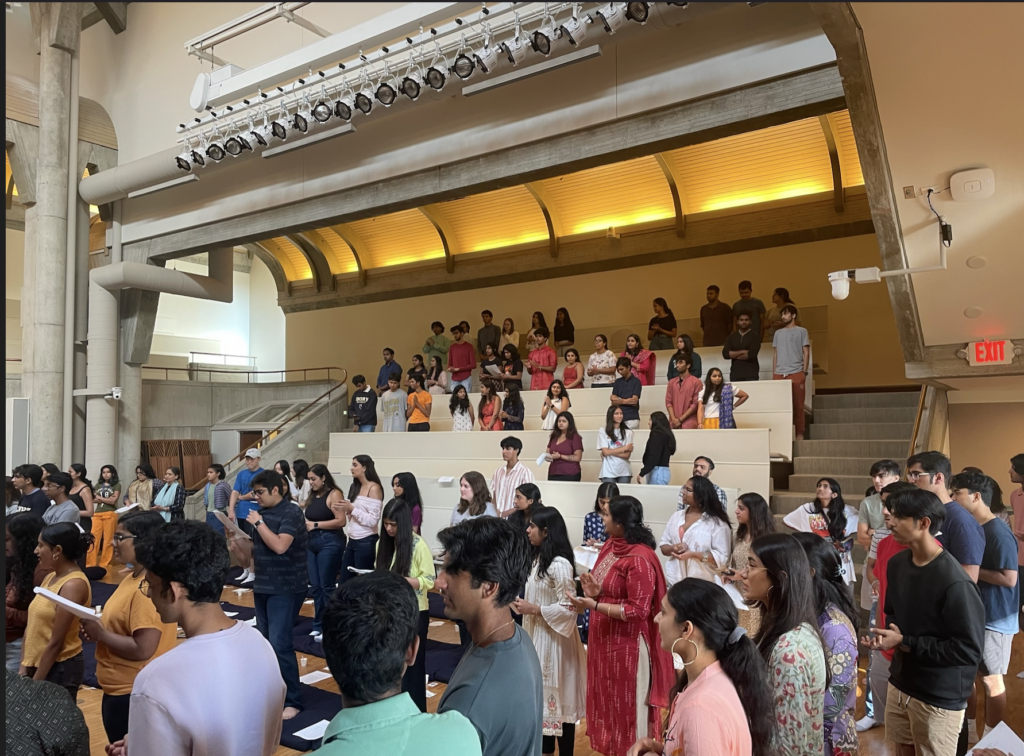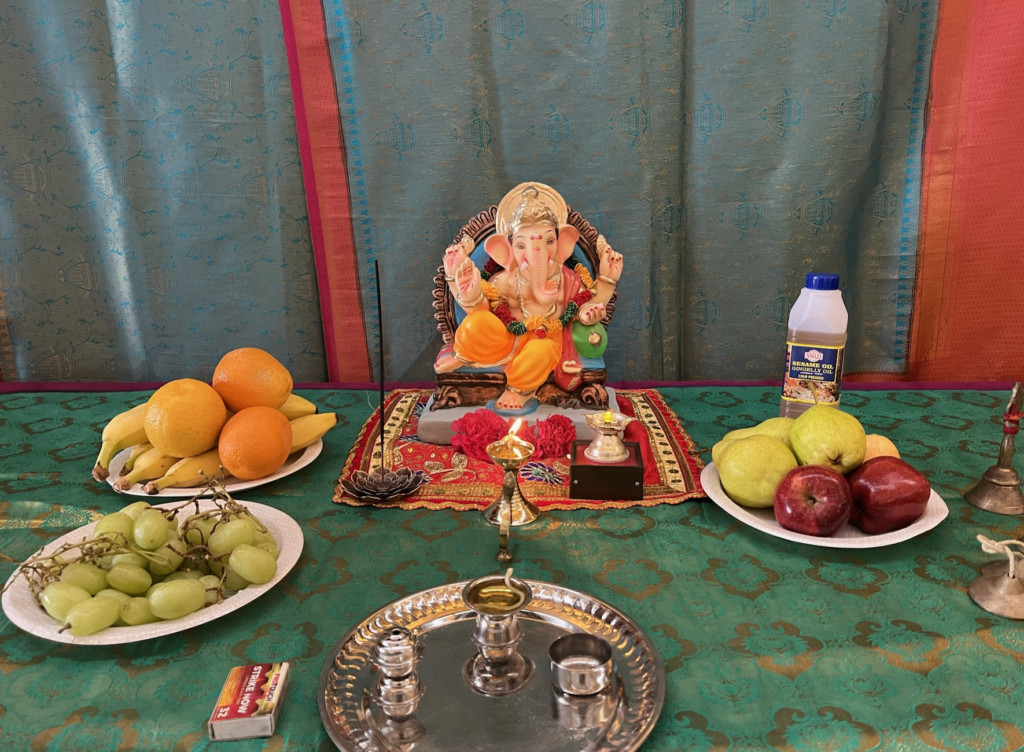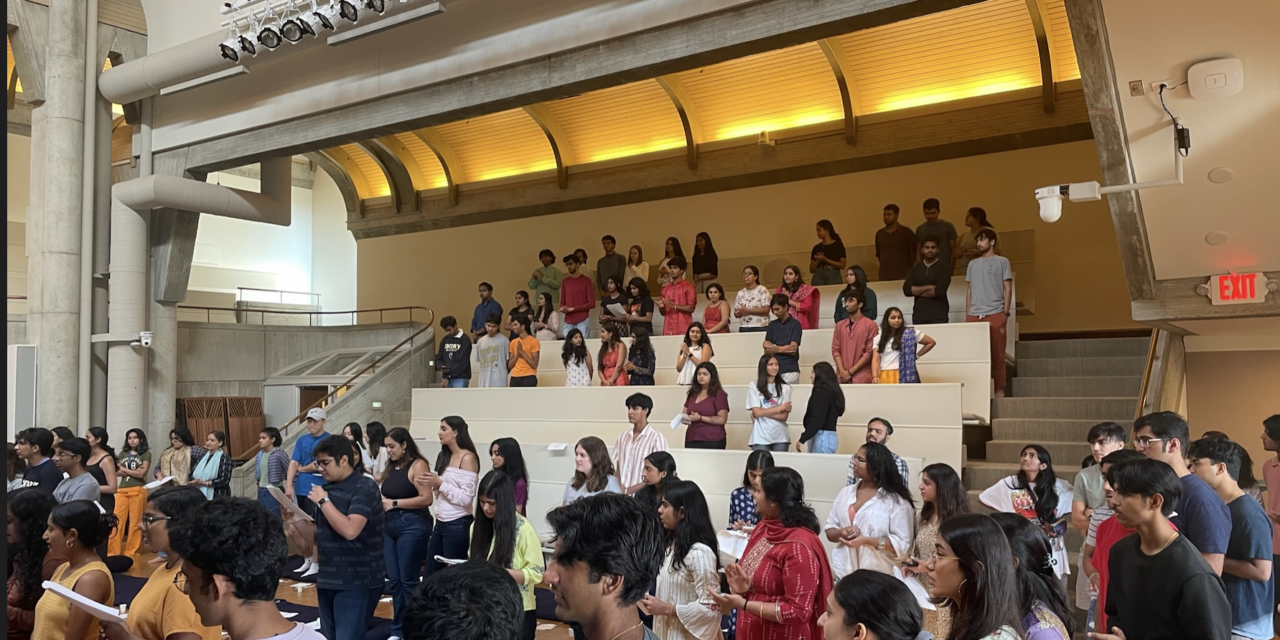
(Ruchi Tipnis/Contributing Writer)
Emory University’s Cannon Chapel transformed into a hub of spiritual resonance and cultural unity on Sept. 22, the evening of the Hindu Students Association’s (HSA) annual Ganesh Chaturthi Puja. The halls echoed with the festival’s solemn chants and vibrant rituals.
Every year, people across India come together to celebrate Ganesh Chaturthi, which marks the birth of Lord Ganesha, the elephant-headed Hindu God of wisdom and prosperity. Millions of people around the country commemorate Lord Ganesha by conducting pujas (worshiping ceremonies), hosting feasts and creating intricate clay idols of the deity.
Dressed in traditional Indian attire, many attendees felt a strong connection to their roots at the celebration. The event served as a cultural bridge for Emory’s Hindu community, bringing them closer to cherished traditions and fostering a sense of unity among students from diverse backgrounds.
“I really felt like I found a community where I belonged during this event,” Jaya Murty (27C) said.
Since the start of the semester, HSA’s executive board worked tirelessly alongside Shweta Chaitanya, the Hindu Chaplain at Emory, to organize the Ganesh Chaturthi Puja and dinner.
“In Hindu culture, Ganesh Chaturthi is really well celebrated, especially in different parts of South India,” HSA co-President Anusha Panjwani (24C) said. “It’s definitely something we think is very important to bring to Emory students here, and we definitely know we have a big audience of people who like to come to Ganesh Chaturthi.”
HSA’s executive board members and Chaitanya gave an educational speech on Ganesh Chaturthi’s significance to kick off the event. With a captivating blend of cultural insights and historical context, speakers painted a vivid picture of how this festival has been woven into the fabric of Indian society for centuries. The puja’s essence, they explained, lies in its role as a hospitality ritual; it acts as a heartfelt invitation to welcome Lord Ganesha into homes and hearts by seeking his blessings and guidance for a prosperous and harmonious life. The speech was a moment of shared knowledge and cultural appreciation that set the stage for the evening’s festivities and deepened the attendees’ understanding of this treasured tradition.
Following the insightful talk, the HSA team conducted the Ganesha Puja, a holy ceremony divided into 21 sacred segments. The puja began with ãchamanam — a purification ritual where attendees readied themselves by symbolically cleansing their hearts and minds by ridding themselves of any ill will or negativity — and concluded with visarjana, a poignant moment where attendees bid Lord Ganesha a fond farewell.
To ensure that every attendee could actively participate in each of the 21 sacred segments, the organizers provided comprehensive sheets containing the chants for the puja in Hindi alongside English translations. The HSA also gave every participant essential materials, including a handful of akshata (rice), fragrant flowers, pure water, gandha (sandalwood paste), a plate and a photograph of Lord Ganesha. These items were important tools for following the puja’s intricate instructions, which Chaitanya elegantly and reverently guided.

(Ruchi Tipnis/Contributing Writer)
“We like to make our pujas interactive,” Panjwani said. “It’s not just Shweta ji doing the puja, it’s also students get involved and understand what it actually means to do the Ganesh Chaturthi Puja.”
Students formed a symbolic chain by linking hands as Chaitanya led the puja. Collectively, the students offered their heartfelt prayers and presented their offerings of rice and flowers to Lord Ganesha. The puja’s centerpiece was the enchanting aarti, a song of veneration, which reverberated throughout the space as an homage to Lord Ganesha. During this part of the ceremony, students took turns approaching the deity’s statue to take his blessings. As the aarti reached its end, students spontaneously sang the Hindu aarti “Om Jai Jagdish Hare.”
The event culminated with dinner catered by Cafe Bombay. The meal featured an array of traditional Indian dishes such as aloo gobhi, paneer makhani, naan, rice and, of course, the traditional boondi ladoo. The flavors and aromas of these authentic dishes offered students a taste of home.
For Panjwani, witnessing attendees leave satisfied with their experience was the most gratifying part of the event.
“It just builds a lot of community, and that’s what HSA has always been for me and for a lot of people on the board,” Panjwani said.
Ruchi Tipnis (she/her, 27C) is from Mumbai, India and intends to major in business and economics. Outside of the wheel, Tipnis is a member of the Economic Student Society’s executive board. In her free time, she enjoys creating art, reading, and capturing memories on her film camera.







